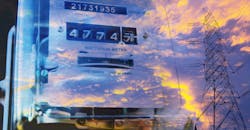Demand Response programs have been offered by electric utilities for several years, paying energy-consuming enterprises to reduce their energy loads during times of grid stress or high energy demand. The early versions of these arrangements were very popular with manufacturers, requiring little oversight and delivering some income. And utility companies rarely invoked their rights to restrict energy supplies. Then things changed.
By 2020 and the situation changed again. The electric generation mix was now much different, including more intermittent sources (wind, solar) and less base load (coal) power. Suddenly, many utilities didn’t have such a comfortable reserve of predictable power. Many utilities reconsidered the advantages of organized programs to reduce power loads quickly and not having to build more reliable generation assets. Which is why DR is popular again.
What is “Demand Response”? Sometimes, the demand for electric power outpaces the grid’s ability to supply it, causing brownouts or blackouts. Instead of producing more energy at great expense to consumers and the environment, the grid operator or local utility can offset the imbalance by reducing the amount of electricity being consumed when demand exceeds supply. That’s Demand Response, and it can be financially rewarding for foundries operating in electric-deregulated states. How rewarding depends on the specific DR program(s) on offer. A Midwest utility recently increased program payouts very significantly.
Participating foundries must apply for enrollment in a DR program. Enrollment is offered only during a specific period each year. The application process is typically managed by a third party that oversees the DR program for the utility. A utility sets a desired maximum amount of power reduction for each DR program, and once that level is achieved no further enrollments are accepted. So, a foundry must be certified for eligibility to reduce electric demand when called upon by the utility when it declares an event.
Historically, it’s rare for an event to be declared by a grid operator or utility. When an event is declared, you’ll have a pre-determined period for reducing your load to the pre-agreed level. This also should allow ample time for you to do an orderly shutdown of essential processes.
What are the benefits? Additional revenue, of course. The foundry will gain an added income stream, without any capital expenditure, just the promise (and action) to reduce the electric load when requested.
Declaring a DR event is a last resort action by a grid operator or utility, to reduce load. It means they’re nearing the point where they don’t have enough generation to meet customers’ demand for power. They may be getting close to “emergency actions,” such as rolling brownouts or blackouts. An event notification gives a foundry an early warning of precarious electric supply issues, providing time to protect vital equipment.
The North American Electric Reliability Council (NERC) North America’s grid reliability watchdog released its annual Winter Reliability Assessment in November. According to Utility Dive: “‘Large swaths of North America face elevated reliability risks this winter, generally driven by factors such as higher peak demand and power plant retirements,” said Fritz Hirst, NERC director of legislative and regulatory affairs.
The report reviews how prepared (or not) each region is to withstand extreme winter weather, which can drive up electric use, reduce fuel supplies for generators, and knock power plants offline. “It’s a sobering assessment,” according to Hirst, “a large portion of North America is at risk of insufficient supplies during the extreme winter scenarios.”
One notable point in the NERC report concerns coal supply. “U.S. coal-fired power plants’ ability to get coal this winter may be affected by ongoing coal production and shipment issues.” As most areas of the U.S. still rely on significant coal-fired generation, insufficient amounts of this energy source could cause major grid disruptions.
Foundries can be good candidates for DR programs. Such programs offer minimal risk to metalcasting operations, and they offer additional revenue and good PR opportunities to showcase efforts to help the grid during emergencies.
We can advise interested foundries of DR programs offered in their areas, with a free assessment of program qualification and potential benefits. If you qualify, we’ll get you enrolled in the program, and then we’ll manage the testing and certification of your load reduction capability for future event participation. If events are declared, we’ll monitor and certify your level of participation to ensure you are properly paid.
Brian Reinke, president of TDI Consulting, is an energy-cost saving consultant.
About the Author
Brian Reinke
President
Brian Reinke, president of TDI Energy Solutions, is an energy-cost saving consultant. Contact him at 630-343-0971.
